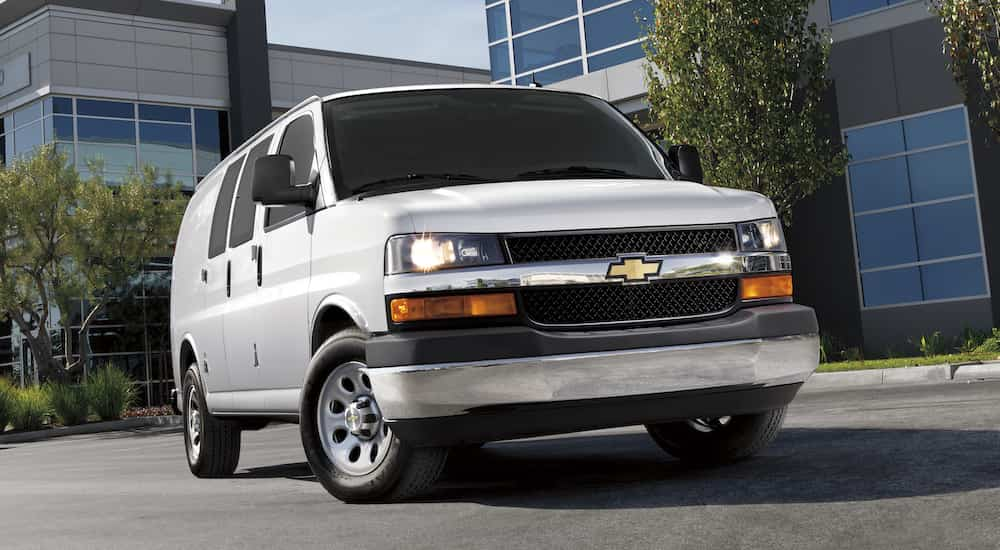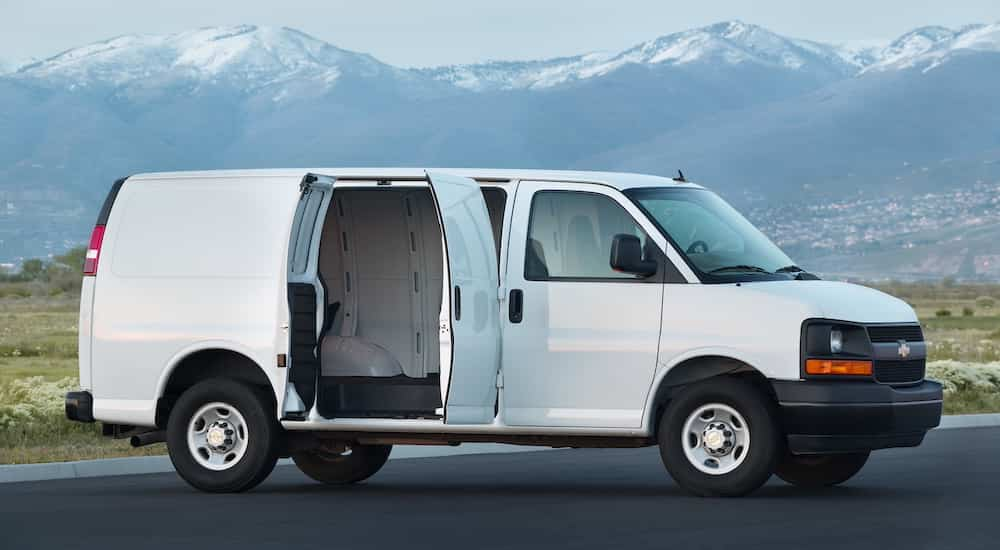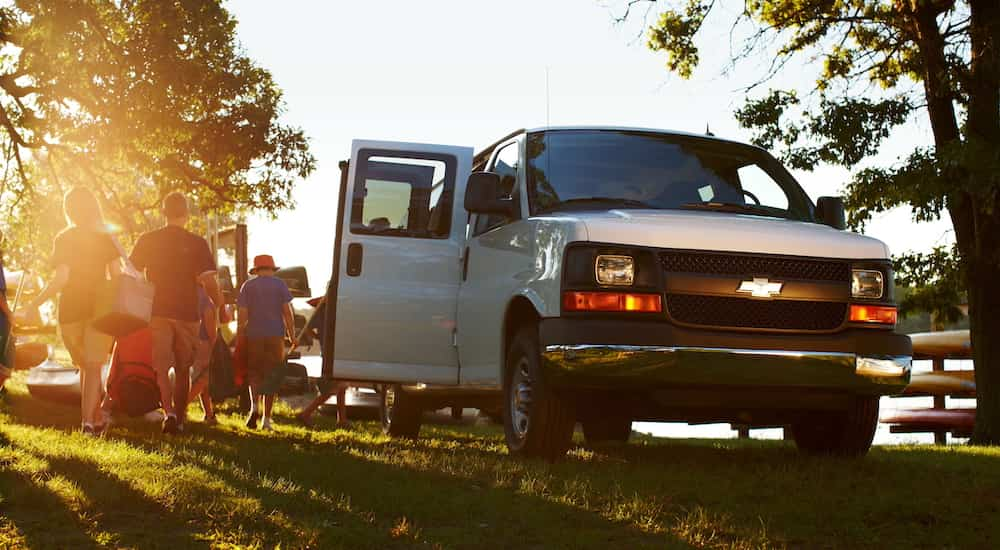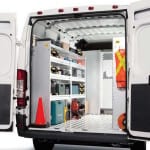For many business owners, a commercial van is more than a means of getting from point A to point B. It’s your mobile office, toolbox and your workshop all rolled into one. A properly outfitted van can make all the difference when it comes to the success of your business, maximizing productivity and lending an air of professionalism that could go a long way in helping you land that next big contract. Upfitting is a popular way of maximizing a commercial van’s utility by installing professional storage systems, tools, and supplies that transform a run-of-the-mill vehicle into an industry-specific workhorse.
These custom build-outs allow tradespeople of all stripes – from painters and general contractors to electricians, plumbers, and HVAC specialists – to carry everything they need to get the job done, drastically cutting down on the amount of time spent running between the shop and the job site or eliminating the need for a brick-and-mortar location altogether. If you’re looking at upfitting your cutaway van for your business, your local used commercial vehicle dealer is a great place to start. They offer all the guidance, expertise, and know-how required to turn a stock van into a business on wheels, with specific packages customized to meet almost any need. Read on as we explore the world of upfitting and give a few tips on how to trick out your own rig.

Purpose-Built
First off, just what is a cutaway van, and how does it differ from a normal van? Cutaway vans, also commonly referred to as box trucks, feature a passenger cabin that is completely separate from the cargo area. Essentially the rear cargo area of the van has been “cut away” from the front passenger area, giving drivers the ability to replace it with a rear storage solution of their choosing. This stands in contrast to cargo vans, which feature an opening between the front passenger compartment and rear cargo area. While both types of vans are used for commercial purposes, they each have some unique advantages and disadvantages that make them particularly well-suited for specific applications and industries. That’s not to say that some cutaway vans don’t feature rear storage access through the passenger compartment – just think of an ambulance – but these are usually alterations performed by second-stage manufacturers, not the automakers themselves.
Cargo vans do offer a few advantages over cutaway vans as they’re typically smaller, offering better visibility and improved front-end clearance. The rear cargo area can be outfitted to accommodate a variety of tools and materials, and their size means they’re better able to navigate crowded city streets and tight parking spots. The big advantage of cutaway vans, on the other hand, lies in their size and customization potential. The rear storage areas typically offer more volume and headroom than a typical cargo van, and with multiple engine options available, it’s not hard to find a cutaway van to fill almost any role. These larger vans also benefit from ample storage as they’re easier to outfit with exterior cabinets, bins, and boxes.
A Van With a Plan
The first step in any van upfitting project should be the planning phase. It’s easy to get overwhelmed by such a project and start second-guessing yourself halfway through, but with a little pre-planning, you can easily avoid those annoying and costly mid-project pivots that can quickly cause you to blow through your budget.
Start by determining how the vehicle will be used. This is largely going to depend on what trade or service you’re in, but there are aspects that are common to almost any industry. For example, consider how much weight you’ll typically be carrying, what tools and supplies you’ll need access to most often, and whether you need to be able to access the cargo area through both the side and rear doors. This is also a good time to think about the level of security you’ll need. Will the vehicle be parked in a secure location each night? If not, consider investing in locking exterior storage units and reinforced windows.
Next, it’s time to think about who will be using the vehicle. If the upfitted van is part of a larger fleet, consult the people who will be using it on a daily basis and take note of any questions, concerns, or tips they might have. Not only may they be able to offer some time and money-saving insights, but bringing stakeholders in early on in the process is a great way to build trust and communication with your team. Soliciting their input will benefit everyone involved and result in a work van that can go a long way in aiding efficiency and safety.
Starting on the Right Foot
Before you begin the upfitting project in earnest, you have to settle on a vehicle. This might seem like an obvious step, but too often, drivers tend to barrel ahead with an upfitting project without giving due consideration to the vehicle itself. If you start with a van that’s an ill-fitting choice for the task at hand, you’ll end up fighting yourself through every step of the process, so make sure to give it some thought.
The biggest consideration when it comes to choosing a vehicle usually comes down to payload capacity. You want to ensure the van you choose will be able to withstand the rigors of life on the job, and if it’s not rated to haul enough weight, it’s going to cause no shortage of problems down the road. Payload capacity is determined by subtracting a vehicle’s curb weight from its gross vehicle weight rating (GVWR), giving you the number of pounds your vehicle can safely haul. Many auto manufacturers offer various versions of their cutaway vans for upfitting purposes, giving business owners the ability to choose a size that’s right for them.
For example, the 2022 Chevy Express Cutaway van comes in two models: the 3500 and heavier-duty 4500. The smaller 3500 offers a GVWR of 12,300 with a generous payload capacity of 7,150, but if you’re seeking something a little more rugged, consider looking into the 4500. Chevy’s top-of-the-line cutaway features a payload capacity upwards of 8,900 pounds, giving you more than enough capacity to upfit the van to your heart’s content.
Payload capacity isn’t the only factor you should consider when researching cutaway vans. Like many pickup trucks, these vans often come in various lengths, so think about how large of a cargo area you’ll require before jumping at the first van that seems to fit the bill. The Chevy Express 3500, for example, comes in three lengths: 139″, 159″, 177″, while the 4500 is only offered in two: 159″, 177″. Those couple feet might not seem like a big difference, but when it comes to the comfort, safety, and productivity of your team, no factor is too small to consider.
Build-a-Van
Once you’ve got a vehicle picked out and input from your teams, it’s just a matter of choosing which components you’ll use to build out your upfitted van. Most of this comes down to storage: choosing the correct racks, shelves, drawers, and bins to fit the unique needs of your business, but there are some less-obvious components that could make all the difference when it comes to getting the job done right.
Partition With Door: As we mentioned previously, cutaway vans, by definition, don’t include an entryway between the front passenger compartment and rear cargo area. Including a partition with a door between the two areas can make all the difference on the job, allowing the drivers access to the rear without exiting the vehicle. The door will also prevent materials from the rear from making their way into the front passenger area, which can go a long way in improving road safety.
Translucent Roof: Outfitting your upfit with a translucent roof is a great way to get some natural light into the rear cargo area without putting any additional strain on your vehicle’s electrical system. This natural light can come in especially handy for any tradespeople who often find themselves completing last-minute work in the rear of the van, increasing visibility and making supplies easier to find.
Ladder Storage: The easiest way to spot an upfitted van in the wild is to keep an eye out for ladders. A tool common to many trades, ladders are often too large or bulky to fit within the cargo area itself, making exterior storage the easiest option. Those who are more concerned about theft than ease of access can opt for interior ladder racks, which, while they can’t always accommodate some larger units, make up for it when it comes to security and peace-of-mind.
Storage Solutions: When it comes to upfitting a van, it’s all about storage options. For many tradespeople, an upfit van is their mobile toolbox, and like any toolbox, organization is paramount. There is no one-size-fits-all option when it comes to storage, as many different businesses might require drastically different types of storage. Those using their vans for delivery purposes might opt for large plastic bins to quickly and easily sort packages, whereas a plumber might require smaller racks with pull-out drawers to store all the nuts, bolts, and fittings required on the job. Upfitting retailers have thought of all this and more, from racks with built-in spools for electricians and installers to galvanized steel bins for contractors who are hauling heavier equipment.
Liftgate: Perfect for heavy appliance delivery and a number of additional applications, a powered liftgate is priceless when it comes to loading large, heavy items into the rear of a van. Typically found on larger trucks and 18-wheelers, manufacturers do make smaller versions of these liftgates that are perfect for upfitting a van. Not only will these reduce fatigue and improve safety on the job, but with a powered liftgate, some of those jobs that used to require two people can now easily be performed by a single worker.
Make Your Van Work for Your Business
When properly upfitted, cutaway vans are an invaluable tool for any business owner. Their flexibility and customization potential open the door to some exciting possibilities, allowing you to spend more time focused on the task at hand and less on logistics. Not only that, but your upfit van can serve as an ideal mobile advertising platform, putting your business’s name, services, and contact info in front of the eyes of countless potential customers every day.
While there is no shortage of upfitting professionals who can build a rig to your exact specifications, a quick visit to your used commercial vehicle dealer is always a good first step. Not only might you find a good deal, but it could provide some inspiration for your work to craft your own ideal cutaway work van. If you’ve been on the fence about investing in an upfit cutaway van for your business, now is the time to explore your options because you’ll never get back that time you spent running back and forth to the shop to get that one tool you left behind.





